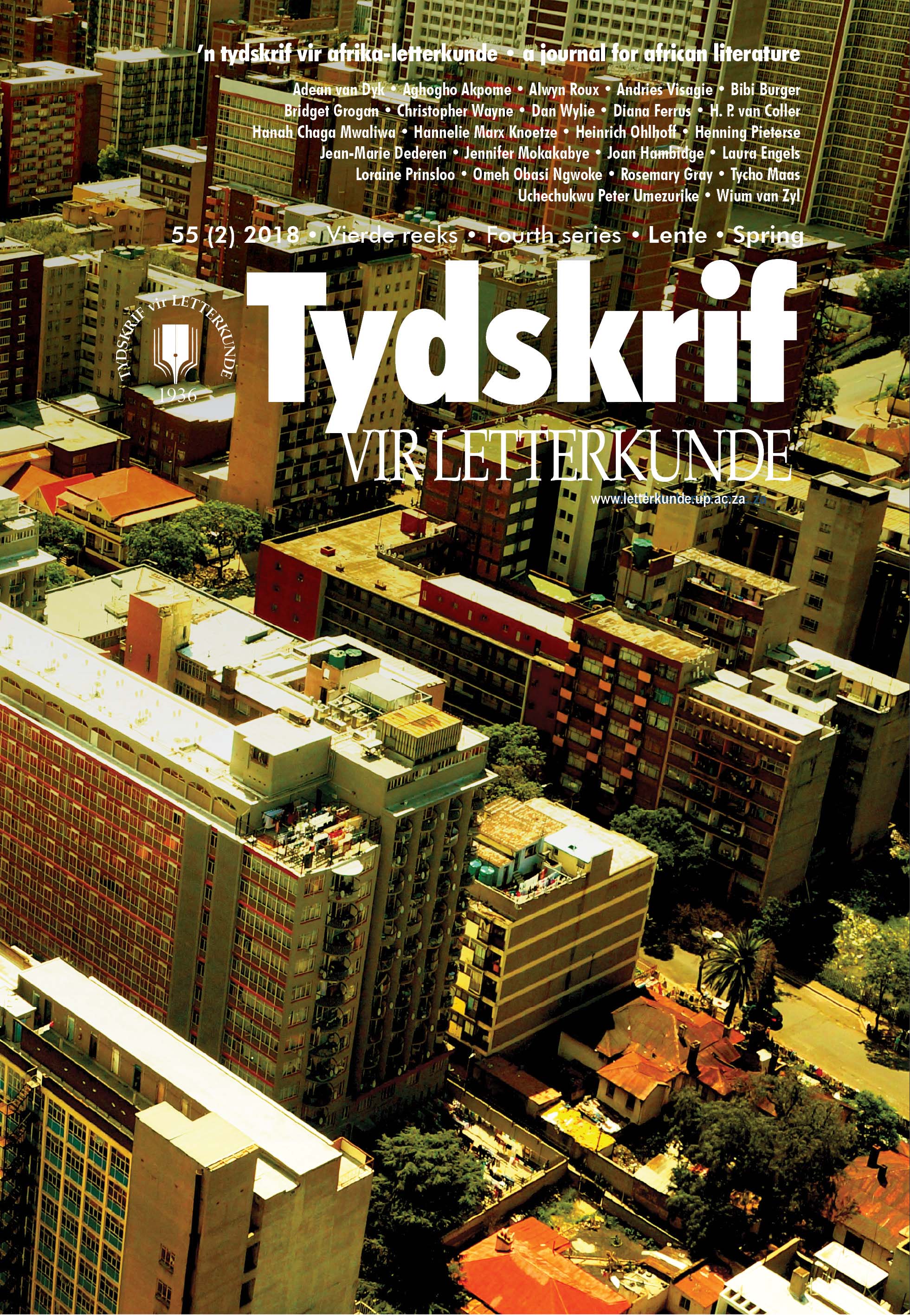Negotiating womanhood: the bird metaphor in Southern African folklore and rites of passage
DOI:
https://doi.org/10.17159/2309-9070/tvl.v.55i2.2934Keywords:
animal symbolism, gender constructs, folklore, rites of passage, bird metaphorAbstract
In spite of its evident presence in Southern Africa’s rich cultural heritage, the bird metaphor has received surprisingly little attention. The cultural materials analysed in this article include children’s stories, songs, heroic poetry and ethnographic accounts of rites of passage. At first the data seems to suggest that bird symbolism could be interpreted in terms of a simple dual conception of gender identity. Some magical birds signify the prowess and authority of men. Others could be linked symbolically to the procreative powers of women. On further reflection, however, we identified a third category of more ambiguously gendered birds. It is contended that this additional bird type can be explained in terms of the female-male dialectic that shaped gender relations in small-scale societies. It is further proposed tentatively that the bird metaphor could have provided women with a symbolic means to negotiate their identity.
Downloads
References
Begler, E. B. “Sex, Status and Authority in Egalitarian Society.” American Anthropologist vol. 80, 1978, pp. 571–88.
Bennun, N. The Broken String. The Last Words of an Extinct People. Viking, 2004.
Berglund, A. Zulu Thought-Patterns and Symbolism. Hurst, 1976.
Bernard, P. S. Messages from the deep: water divinities, dreams and diviners in Southern
Africa. Diss. Rhodes U, 2010. http://hdl.handle.net/10962/d1007644.
Biesele, M. Women like meat: The Folklore and Foraging Ideology of the Kalahari Ju/’hoan.
Wits U P, 1993.
Blacking, J. “The Songs, Mimes, Dances and Symbolism of Venda Girls’ Initiation Schools.” African Studies vol. 28, 1969, pp. 3–35, 69–118, 149–99, 216–66.
Corbeil, J. J. Mbusa. Sacred emblems of the Bemba. Ethnographica, 1982.
Davison, P. “Lovedu Material Culture.” Annals of the South African Museum vol. 94, no. 3,
, pp. 41–201.
Dederen, J.M. “A Dog with a Collar … Field notes on an ‘indigenous wedding gown’.” Anthropology Southern Africa vol. 34, no. 3–4, 2011, pp. 89–95. DOI: https://doi.org/10.1080/23323256.2011.11500012.
Dederen, J.M. “Redemption, Resistance, Rebellion: the three R’s of African Folklore.” Historia vol. 53, no. 1, 2008, pp. 260–7.
Eiselen, W.M. “Religious Beliefs and Practices.” The Bantu-speaking Tribes of South Africa. An Ethnographical Survey. Ed. I. Schapera. Maskew Miller, 1937, pp. 247–70.
Garlake, P. S. Great Zimbabwe. Thames & Hudson, 1973.
Guenther, M. Tricksters and Trancers. Bushman Religion and Society. Indiana U P, 1999.
Heintze, B. “Der südrhodesischen dziva-Komplex.” Anthropos vol. 62, no. 3–4, 1967, pp. 337–68.
Hertslet, J. Bantu Folk Tales. The African Bookman, 1946.
Hewitt, R. Structure, Meaning and Ritual in the Narratives of the Southern San. Wits U P, 1986.
Hoff, A. “The Water Bull of the /Xam.” South African Archaeological Bulletin vol. 53, 1998, pp. 109–124.
Jordan, A. C. Tales from Southern Africa. U of California P, 1973.
Junod, H. A. The Life of a South African Tribe. Macmillan, 1927.
Keeney, B. and H. Keeney. “Reentry into First Creation: A Contextual Frame for the Ju/’hoan Bushman Performance of Puberty Rites, Storytelling and Healing Dance.” Journal of Anthropological Research vol. 69, no. 1, 2013, pp. 65–86. http://www.jstor.org/stable/24393640.
Keyser, A. Venda sprokies: uit die volksmond oorvertel. Voortrekkerpers, 1949.
Krige, E. J. The Social System of the Zulus. Shuter & Shooter, 1936.
Krige, E. J. and J. D. Krige. The Realm of a Rain-Queen. A Study of the Pattern of Lovedu Society. Juta, 1943.
Kruger, J. and I. le Roux. The Flamboyant Rooster and Other Tshivenda Song Stories. School of Music, North West U, 2007.
Kunene, D. P. Heroic Poetry of the Basotho. Oxford U P, 1971.
Lemekoana, J. M. and I. S. Masola. Sebešong. Centaur, 1988.
Lestrade, G. P. Some Venda Folk-Tales. Lovedale, 1949.
Makgalo, D. M., J. Z. Mothuši and S. A. Makopo. Mokga kgati …! Actua, 1986.
Mashilo, P. M., V. M. Mashilo and M. R. Mampuru. Ekwang tša koko le borakgolo. Kalahari, 2005.
Richards, A. I. Chisungu: A Girls’ Initiation Ceremony among the Bemba of Northern Rhodesia. Faber and Faber, 1956.
Scheub, H. The Xhosa ntsomi. Clarendon, 1975.
Scott, J. W. Gender and the Politics of History. Columbia UP, 1999.
Silberbauer, G. B. “Marriage and the Girls’ Puberty Ceremony of the G/wi Bushmen.” Journal of the International African Institute vol. 33, no. 1, 1963, pp. 12–24.
Stayt, H. A. The Bavenda. Oxford U P, 1931.
Stefaniszyn, B. “The Hunting Songs of the Ambo.” African Studies vol. 10, no. 1, 1951, pp. 1–12.
Turner, V. W. The Forest of Symbols. Ithaca, 1967.
Van Warmelo, N. J. Contributions towards Venda History, Religion and Tribal Ritual. Government Printers, 1932.
Witt, J. “Comments on Vukwe: a Zimbabwe Type Site in North-Eastern Botswana.” The Digging Stick vol. 27, no. 1, 2010, p. 13.
Downloads
Published
Issue
Section
License
Copyright (c) 2018 Tydskrif vir Letterkunde

This work is licensed under a Creative Commons Attribution-ShareAlike 4.0 International License.


 https://orcid.org/0000-0001-6465-6584
https://orcid.org/0000-0001-6465-6584


.png)